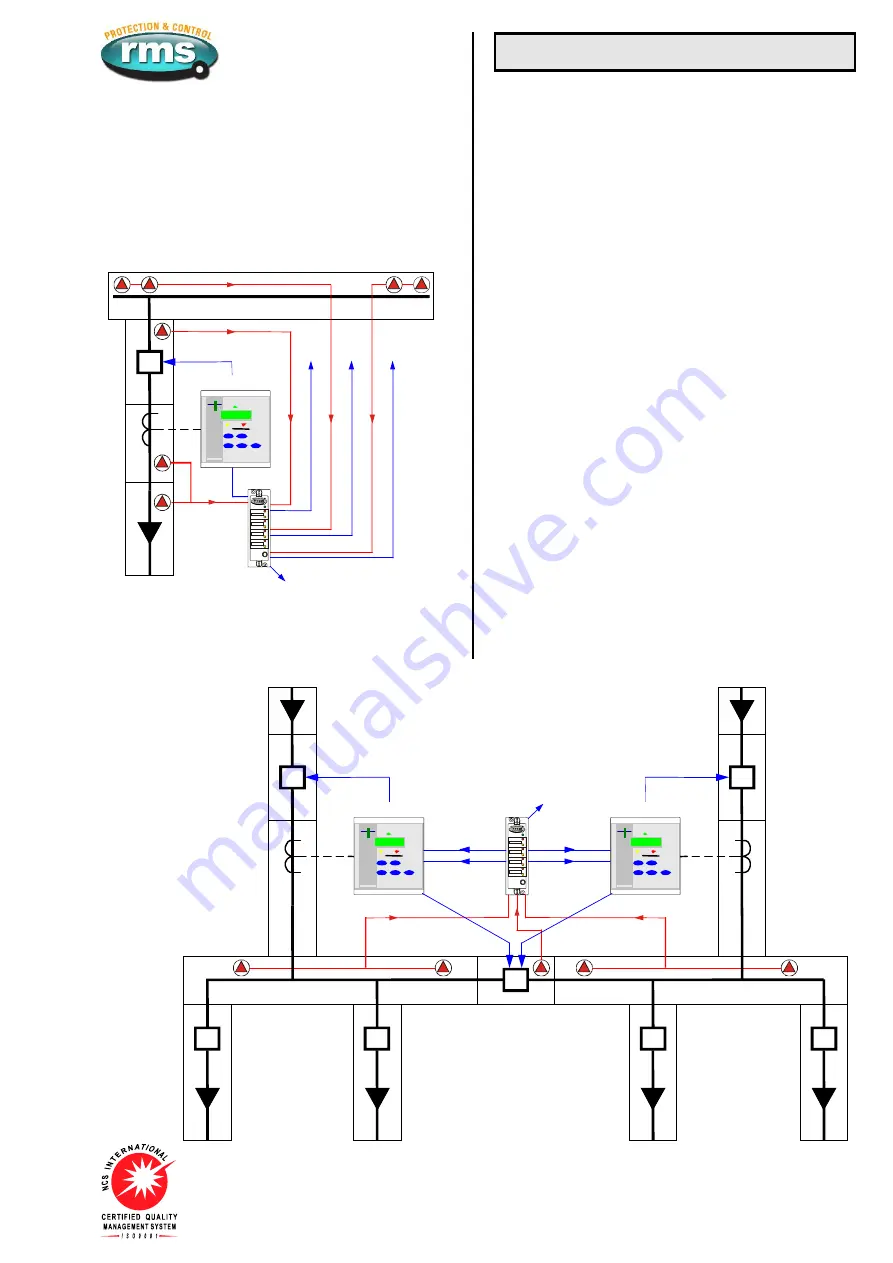
Visit
www.rmspl.com.au
for the latest product information.
Due to RMS continuous product improvement policy this information is subject to change without notice. 1S25/Issue F/07/03/2011 - 3/9
COMBINED BUS BAR & SWITCHGEAR ARC PROTECTION
Figure 4 shows an application where a single 1S25 is applied for
the protection of a feeder Cable box & CT chamber plus the CB
chamber & BUS chamber using up to eight arc sensors over four
zones. In this configuration one arc trip output is used to trip the
feeder circuit breaker in the event of an arc fault in the cable box
/ CT chamber. Zone 2, 3 & 4 trip outputs are used to trip the BUS
breaker (BUS overcurrent check stage not shown), in the event of
an arc fault in the CB chamber or BUS chamber.
ZONE 1
ZONE 2
ARC PROTECTION
ZONE 3
ARC PROTECTION
ZONE 2, 3 & 4 TRIP
UP STREAM BREAKER
ZONE 4
ARC PROTECTION
COMMON ALARM OUTPUT
1S25
HEALTH Y
Z ONE 2
Z ONE 3
Z ONE 4
Z ONE 1
Cus tom te xt
Cus tom te xt
Cus tom te xt
Cus tom te xt
FAIL
FAIL
FAIL
FAIL
T RIP
T RIP
T RIP
T RIP
RESET
/T EST
50/51
Figure 4: Two arc sensors in zone 1 - Cable box & CT chamber
One or two arc sensors in zone 2 for CB chamber
One or two arc sensors in zone 3 for BUS chamber
One or two arc sensors in zone 4 for BUS chamber
BUS Bar Applications
BUS BAR ARC PROTECTION
Figure 5 depicts how the 1S25 may also be applied for the
protection of bus bars. The number of sensors in the bus
chamber is dictated by the switchgear design and the length of
switchboard.
In most indoor metal clad switchgear the bus bar chamber is a
continuous chamber between panels only broken into segregated
sections at a bus section breaker & as such the strategic
placement of one or two arc sensors in each bus bar chamber
run is normally adequate.
Some indoor metal clad switchgear may segregate the bus
chamber of each panel from the next via insulated bus chamber
side barriers per panel, if this is the case then each bus chamber
per panel would need to be monitored by at least one arc sensor.
Isolating switches between BUS bar sections need also be
considered & appropriate tripping zones created to ensure
isolation of the faulted section.
In large enclosures the arc sensors should be placed at
approximately 5m intervals. 1S30 arc sensors are also available
with dual optical detectors to allow detection of arc in both
directions.
ZONE 1 & 3
TRIP
COMMON
ALARM
OUTPUT
50/51
1S25
HEALTH Y
Z ONE 2
Z ONE 3
Z ONE 4
Z ONE 1
Cus tom te xt
Cus tom te xt
Cus tom te xt
Cus tom te xt
FAIL
FAIL
FAIL
FAIL
T RIP
T RIP
T RIP
T RIP
RESET
/T EST
ZONE 2 & 3
TRIP
50/51
ZONE 1
TRIP
ZONE
3
TRIP
ZONE 2
TRIP
ZONE
3
TRIP
ZONE 1
ZONE 3
ZONE 2
ZONE
1
TRIP
ZONE
2
TRIP
Figure 5: One to eight arc sensors located in the BUS chamber in up to four tripping zones





















